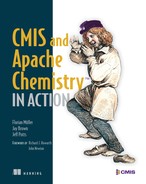Foreword
Content has never been more important. Content drives transactions, websites, and engagement. Content is the container of information that makes data consumable, usable, and actionable and has become the lifeblood of many businesses and business processes. Financial service, media, government, and high-technology organizations wouldn’t exist without electronic documents and other forms of content. Today the Enterprise Content Management industry is worth $5 billion in software alone, according to analyst group IDC. Businesses dealing with the overload of information and the need to keep that information timely and accurate are willing to pay a lot to get content under control.
However, in the three decades since the introduction of content management, the number of content systems has proliferated, with many similar systems sitting side by side. Internal IT organizations and system integrators are frequently reinventing the wheel as the CIO struggles to meet the information needs of the enterprise. Over the last two decades, this has led enterprises large and small to spend over $50 billion on software, hardware, and services to deliver content solutions to end users. Solutions such as invoice capture, contract management, regulatory submissions, and responsive websites, among many, many other solutions, can take months and even years to go into effective production.
If only we could reuse these solutions on our other content systems! If only we could develop solutions without worrying how and where they were going to be deployed. If only applications developers built these solutions as complete solutions that could deploy faster and cheaper. If only we could hire the developers trained to build these solutions.
It says a lot about the content management industry, populated by some of the most competitive firms in enterprise software, that those competitors recognized the customer need for these solutions and to make them affordable. The same competitors recognized that a content management industry built on standards and interoperability could be even bigger with higher value to the customer. That’s why these software companies got together to form CMIS as an open and common way of accessing all their systems and to provide a consistent way of developing their applications.
This was no easy feat. Developing standards is a laborious process and takes a lot of persistence. The content management industry had tried several times before, in the previous decade, with little success. In 2008, competitors set their differences aside and decided that growing the market for content was more important than expanding their piece of the pie. Beginning with EMC, IBM, and Microsoft, then adding Alfresco, OpenText, Oracle, and SAP, and finally opening it to the whole world of content through OASIS, these competitors started the collaborative project known as CMIS. Reacting to customer requests to provide for interoperability between diverse systems and a desire to build a stronger ecosystem, these companies wanted to work together to make a bigger market. The pragmatic approach of the committee, led by Chair David Choy and editors Al Brown, Ethan Gur-esh, Ryan McVeigh, and Florian Müller, produced a specification that was implementable on a wide range of systems.
What was even more remarkable was the way that many of those same companies and individuals came together to jointly develop the Apache Chemistry project, an open and standards-based software platform to speed the development of the CMIS standard. Florian Müller, in particular, had the vision to have one common code base that would support multiple communication protocols and could be used either by the vendors providing a CMIS interface or applications using CMIS to access content repositories. Initially, the OpenCMIS group in Apache Chemistry, by sharing the load of developing common software, made sure that everyone won—vendors, developers, and users.
This book illustrates the breadth and possibilities of CMIS, because having open standards and common open source code has dramatically cut the time to implementation for both providers and users of CMIS. With the original vision of CMIS not being tied to any particular programming language or binding, this book develops example applications using many languages and development approaches. It’s a testament not just to the ingenuity of the authors, but also to the dedication of the men and women who participated in CMIS and Apache Chemistry.
I’ve always been a keen optimist about what can be accomplished with CMIS. The timing of the arrival of CMIS and Apache Chemistry couldn’t have been better to tackle new applications that are social, mobile, and in the cloud. By considering RESTful interfaces, developers can use modern tools to create these applications and have access to some of the most important information in an enterprise, whether serving an employee, a customer, or a consumer. CMIS also provides an important bridge of new, productive, mobile and social applications to legacy systems of production enterprise systems. Content will be delivered wherever it’s needed, whether it’s in a social media conversation, presented on a mobile device, captured in a high-throughput scanner, or annotated in a critical process application.
I hope this book not only educates you on how to develop portable content applications, but inspires you to put content to work in new and imaginative ways.
JOHN NEWTON
CHAIRMAN AND CTO, ALFRESCO
CHAIRMAN, AIIM
